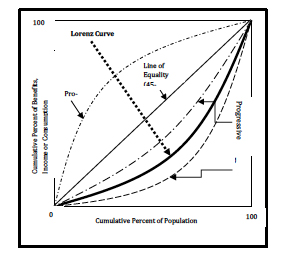Inequality Effects of Fiscal Policy: Analysing the Benefit Incidence on Health Sector in India
KAUSHIK K. BHADRA, Project Associate, National Institute of Public Finance and Policy, New Delhi. email:kaushik.bhadra@nipfp.org.in
|
Relevance of Benefit Incidence Analysis in India
Inequality effect of fiscal policy is an elusive area of research, for which, there is a growing recognition of the need to analyse the distributional impact of public spending, particularly on merit goods. In Indian federalism, it is important to analyse whether public spending is well targeted to the poor. Higher public spending on merit goods, per se, does not ensure that the poor receive an appropriate share of the increased or existing allocation of public spending. Comprehending incidences of public expenditure is therefore crucial in this backdrop since not all expenditures benefit households or individuals of different income levels to the same extent, due to several factors including access. From literature, what we can concisely infer are the following:
1. Apart from a few pro-poor instances, the global empirical survey on benefit incidence analysis (BIA) largely reveals that public spending on merit goods is either poorly targeted or progressive in nature.
2. Benefit incidence of public spending on merit goods for most of the states in India shows pro-richness while some shows progressive. Although, there are a few states that reveal pro-poor targeting, but they substantially have either gender or regional differentials.
I in Bhadra (2015) on which this One pager is based, seek to capture the impact of fiscal decentralisation on public health service delivery through analysing benefits incidence from public spending on curative health care provided as inpatient care for three Indian states – Bihar, West Bengal and Kerala to decipher whether public spending is pro-poor. In order to explore this issue; I empirically seek answers to the following questions:
1. Is public spending on health pro-poor across these three states? Has the targeting improved over time?
2. Do gender (male versus female) and regional (rural versus urban) differentials exist in access to inpatient health services in these states? If both the differentials are found in the year 2004-05 then have the states been able to lessen such differentials in 2014-15?
The Analytical framework
The analysis is built on using two databases: one is Finance Accounts of Bihar, Kerala and West Bengal for obtaining public spending on health and the other is household and individual level data from two latest NSS rounds relating to health and health care viz., 60th round in 2004-05 and 71st round in 2014-15.
 |
Symbolically BIA is as follows:
where 𝑋𝑗 is the benefit incidence from the total health spending enjoyed by income or consumption expenditure group j; 𝑈𝑖𝑗 represents the number of beneficiaries utilise health service in level i from group j; 𝑈𝑖 is the utilisation of service in level i by all income or consumption groups combined; 𝑆𝑖 denotes net public spending on health level i; and 𝑢𝑖𝑗 represents share of group j of utilisation of service in level i.
Inferences from Benefit Incidence Analysis
The benefit incidence analyses in this paper essentially capture the accessibility and unit costs distributed amongst category-wise (gender and region) economic classes. The important inferences emerging from the paper can be summarised as follows:
1. It is observed that there is a status quo in targeting the poorest segment in Kerala and West Bengal, while Bihar shows significant improvement in targeting the poor over time.
2. Concentration curves as estimated show significant rural-urban differentials in access to health services in these three states. The broad conclusion is that accessing service delivery is varied across states in India.
3. The results however need to be considered with a few caveats. Individual income level and comparatively less availability of private health infrastructure in rural area may be explanatory reasons behind greater dependence on public health services. This is particualry important to probe further in case of Bihar.
4. Utilisation also depends on various non-price factors, which cannot be captured through benefit incidence analysis. Besides, the utilisation depends on choices – if beneficiaries are given more than one option regarding where (Hospitals/PHCs/CHCs/Sub Centres) and who (doctors) to seek treatment, then they would reveal their preferences by “voting with their feet” (Tiebout, 1956).
Given the low level of public health spending (in both per capita and as percent to GSDP terms), the region-wise composition of public health spending differs across these states and lower in rural as compared to urban area. Thus, critical evaluation of the role of decentralised governance is imperative for reinforcing the public service delivery of such an important merit good (Torres and Pachón, 2013). It could be argued from our analysis that despite having limitations, the BIA is a valuable tool to capture and present the benefit incidence for diverse economic classes from public provisioning of health care in targeting the poorest segment.
References
Davoodi, H. R., E. R. Tiongson, and S. S. Asawanuchit. 2003. How Useful Are Benefit Incidence Analysis of Public Education and Health Spending?. IMF Working Paper 03/22733. Washington D.C: International Monetary Fund.
Tiebout, C. M. 1956. A Pure Theory of Local Expenditures. The Journal of Political Economy 64 (5): 416-424.
Torres, F. S., and M. Pachón. 2013. Decentralization, Fiscal Effort and Social Progress in Colombia at the Municipal Level, 1994 – 2009: Why Does National Politics Matter? IDB Working Paper Series, July 2013.
|





